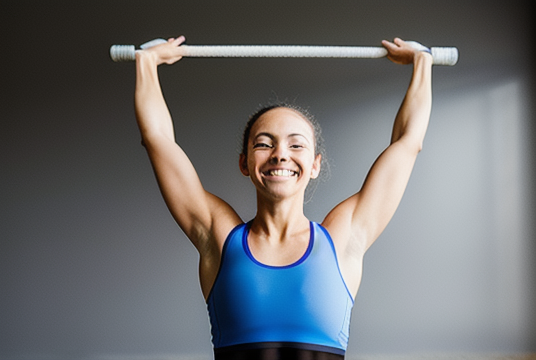Effective Stretching for Better Post-Workout Recovery
Are you tired of feeling sore and stiff after a workout? Do you wish there was a way to recover faster so you can get back to your routine? Effective stretching may be the answer you’re looking for.
Stretching is often overlooked as an essential part of a workout routine, but it can have a significant impact on your recovery. When you stretch, you increase blood flow to your muscles, which helps to reduce soreness and stiffness. It also helps to improve your range of motion, which can prevent injuries.
In this article, we’ll cover everything you need to know about effective stretching for better post-workout recovery. We’ll dive into the benefits of stretching, different types of stretches, and how to incorporate them into your routine. So, let’s get started!
Benefits of Stretching
Stretching offers a range of benefits that can improve your overall performance and recovery. Here are some of the key benefits of stretching:
- Reduces muscle soreness and stiffness
Stretching helps to increase blood flow to your muscles, which can reduce soreness and stiffness after a workout. It also helps to flush out toxins that build up in your muscles during exercise.
- Improves range of motion
Stretching helps to improve your flexibility and range of motion, which can prevent injuries and improve your overall performance. It also helps to reduce muscle imbalances, which can lead to poor posture and pain.
- Enhances athletic performance
By improving your range of motion and reducing muscle imbalances, stretching can help to enhance your athletic performance. It can also help to improve your balance, coordination, and agility.
Types of Stretches
There are several different types of stretches that you can incorporate into your routine. Here are some of the most common types of stretches:
- Static stretching
Static stretching involves holding a stretch for a set period of time. This type of stretching is great for improving flexibility and range of motion. Examples of static stretches include hamstring stretches, quad stretches, and calf stretches.
- Dynamic stretching
Dynamic stretching involves moving through a range of motion in a controlled manner. This type of stretching is great for improving your warm-up and preparing your muscles for exercise. Examples of dynamic stretches include walking lunges, high knees, and leg swings.
- Active stretching
Active stretching involves using your muscles to hold a stretch. This type of stretching is great for improving your flexibility and range of motion. Examples of active stretches include the downward dog yoga pose and the side stretch.
How to Incorporate Stretching into Your Routine
Now that you know the benefits of stretching and the different types of stretches, it’s time to incorporate them into your routine. Here are some tips for incorporating stretching into your routine:
- Stretch after your workout
Stretching after your workout is the best time to stretch. This is when your muscles are warm and more receptive to stretching. Aim to stretch for at least 10 minutes after your workout.
- Focus on major muscle groups
When stretching, focus on major muscle groups such as your hamstrings, quads, and calves. These muscles are often tight and can benefit from stretching.
- Hold each stretch for 30 seconds
When stretching, hold each stretch for at least 30 seconds. This will give your muscles enough time to relax and stretch.
- Don’t bounce
Avoid bouncing when stretching as this can cause injury. Instead, hold each stretch in a static position.
- Breathe deeply
When stretching, breathe deeply and slowly. This will help to relax your muscles and increase blood flow.
In conclusion, effective stretching is an essential part of a workout routine that can have a significant impact on your recovery. By incorporating stretching into your routine, you can reduce soreness and
“>
You may like this video!
